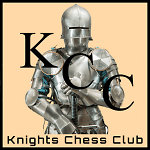
Knights Chess Club
Welcome To All, Young And Old
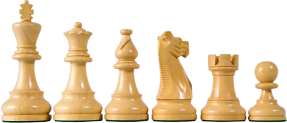

How To Write Algebraic Chess Notation
Because of the confusion inherent in writing descriptive chess notation, algebraic notation has gained popularity and become the notation of choice for recording a chess game. The main advantage of algebraic notation is that every space on the chess board has one, and only one, unique name. Algebraic notation is the method used today by all chess organizations and in chess books, magazines, and newspapers to record the moves of chess games. It has replaced descriptive chess notation, although the older notation can still be found in older literature.
Naming the Pieces
In algebraic notation the name of each piece is based on its initial, with the exception of the Knight where "N" is used. English speaking players use:
- K for King
- Q for Queen
- R for Rook
- B for Bishop
- N for Knight (Kt is obsolete)
- P for Pawn
Naming the Squares on the Board
The chess board has 8 Rows, and 8 Columns. These rows are called RANKS, and the columns are called FILES. So you have 8 RANKS from bottom to top, and 8 FILES from left to right. See the image provided.
The RANKS (rows) and FILES (columns) have names. The bottom RANK is called the 1st RANK. The second RANK from the bottom is called the 2nd RANK, and so on up to the 8th RANK.
The FILES are named with the letters "a" through "h" moving from left to right. So, starting from the left and proceeding right the FILES are called the "a" File, the "b" File, the "c" File, and so on to the "h" File on the far right.
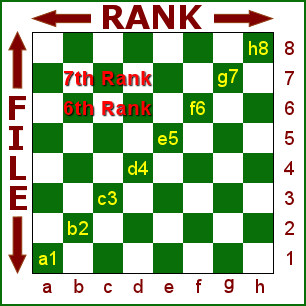 Squares on the board are named according to what we have learned about the file names and rank numbers. For example, the 2nd square up on the "b" file is the b2 square. The 3rd square up on the "c" file is the c3 square The 8th square up on the "h" file is the h8 square, and so on for any square on the chess board.
Squares on the board are named according to what we have learned about the file names and rank numbers. For example, the 2nd square up on the "b" file is the b2 square. The 3rd square up on the "c" file is the c3 square The 8th square up on the "h" file is the h8 square, and so on for any square on the chess board.
Playing White or Black
It doesn't matter whether you are playing with the white pieces or the black. The square names always remain the same. The game always begins with the white pieces on the 1st and 2nd rank, and blacks pieces on the 7th and 8th rank.
Some Notation Attributes to be Familiar With
Before going any further lets take a moment to share some expressions. Placing any of the following expressions after a written chess move means:
!! — Brilliant move
! — Good move
!? — Interesting move
?! — Dubious move
? — Poor move
?? — Blunder
+ — Check (the King is in check)
++ — Check Mate
e.p. — en passant (taking a pawn en passant)
Other Special Notation
0-0 — Castles King Side
0-0-0 — Castles Queen Side
x — Means captures. PxP (Pawn takes Pawn)
= — used when a pawn reaches the 8th rank and turns into a piece. Example: Pd8=Q
Writing Results
1-0 means White wins
0-1 means Black wins
1/2-1/2 means the game is a draw
Written after the last move of the game.
Writing Down Your Moves
Remember, whether you are writing moves for the white or black pieces, the square names always remain the same. See the demonstration below.
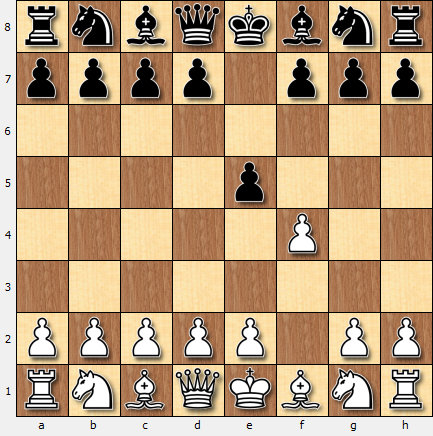
1. f4 e5
White moves a pawn from f2 to f4.
Black moves a pawn from e7 to e5.
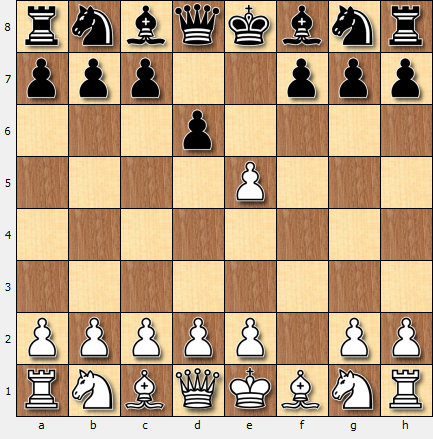
2. fxe5 d6
Whites pawn in the "f" file takes blacks pawn on e5.
Black moves a pawn from d7 to d6. If another piece had moved to d6 such as the bishop on f8, the move would have been writen Bd6.
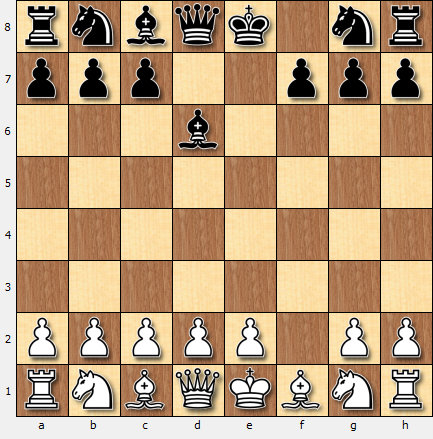
3. exd6 Bxd6
Whites pawn "P" on the "e" file takes "x" blacks pawn "P" on d6.
Blacks Bishop "B" takes "x" whites Pawn "P" on "d6".
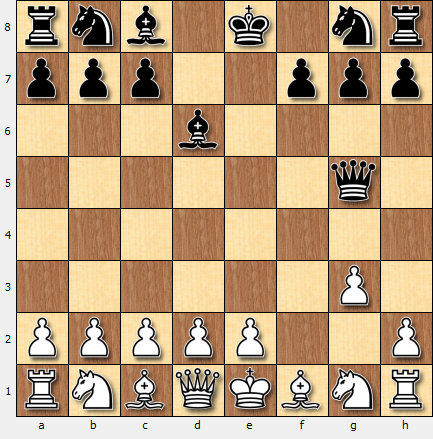
4. g3 Qg5
White moves a pawn "P" from g2 to g3.
Blacks Queen "Q" moves to g5.
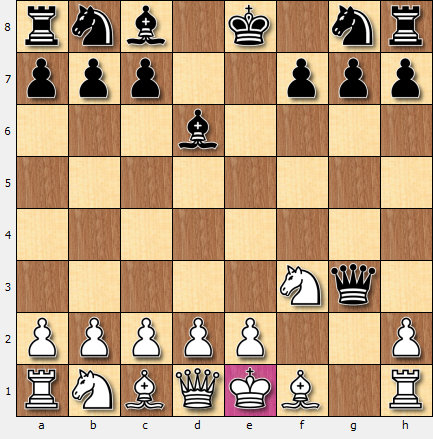
5. Nf3 Qxg3+
Whites Knight "N" moves to f3.
Blacks Queen "Q" takes "x" whites pawn on g3 checking "+" whites King.
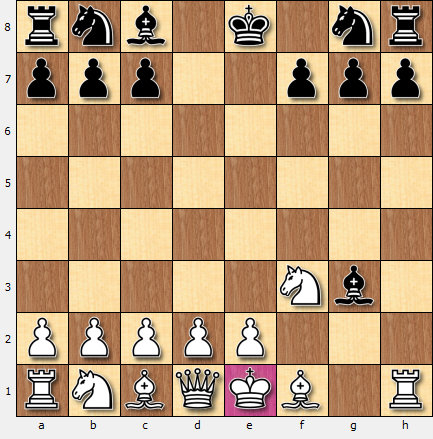
6. hxg3 Bxg3++
Whites pawn "P" on "h" takes "x" blacks Queen on g3.
Blacks Bishop "B" takes "x" whites Pawn on "g3" checkmating "++" the white King.






